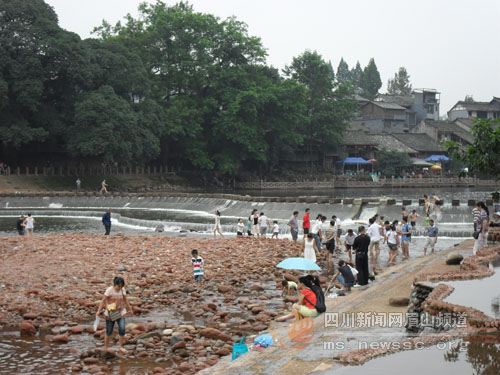Gains of a green drive
Good for the planet
 |
| Hongya County takes on an entirely new look with the Grain for Green project and rural tourism prospers as a result. |
In response to escalated ecological deterioration across the nation, particularly frequent floods of the Yangtze and Yellow Rivers and serious soil erosion in central and western regions, the State Council decided to conduct a trial of returning farmland to forest or grassland in 1999. The project was implemented nationwide and was in full swing by 2002. Farmland with a slope of more than 25 degrees and seriously desertified land would be covered by trees.
"When forest area was small, as in the past, the air wasn't very good," Zhao pointed out; he has been living in the mountains for decades, so is sensitive to air quality. "Now, the farther you walk, the more comfortable you feel; the air is clear."
"The effects of better air quality and water conservation are almost intuitive," said Peng, "The Qingyi River at the foot of the mountains is crystal clear now. In the past, however, surface soil would be washed away to the river when it rained or the waters rose on the banks. Better vegetation prevents soil erosion."
Hongya County took on an entirely new look with the project and rural tourism prospers as a result. In Liujiang Town, for example, 120 households opened family inns.
Located in the upper reaches of the Yangtze River and Yellow River, Sichuan is of great significance in terms of water resource conservation, indeed it plays an important role in national ecological reconstruction.
In 1999, Sichuan took the lead in implementing the Grain for Green project. As of the end of 2009, the area of forest increased by 28.32 million mu, of which about 13.36 million used to be farmland. The investment from both the central and local governments accumulated to RMB 29 billion, benefiting 22.66 million farmers of 6.34 million households. Each household received an average subsidy of RMB 4,000.
 0
0 






